Physical Address
304 North Cardinal St.
Dorchester Center, MA 02124
Pathologic changes seen in any component of the peripheral nerve
Peripheral nerve disorders are common conditions affecting approximately 2.4% of the population
Prevalence increases with age to up to 8% of the population
Altered sensation including numbness, pain, and paresthesia if a sensory nerve is involved
Weakness (distal more than proximal) if a motor nerve is involved
Altered pain and temperature sensation if small fibers are primarily affected
Autonomic dysfunction such as orthostatic hypotension may ensue if autonomic nerves are involved
When large fibers are the main target of the disease process, there is loss of tendon reflexes, touch and pressure sensation, proprioception, and weakness
Clinical patterns of neuropathy
Mononeuropathy—only one nerve involved in the disease process
Mononeuritis multiplex—multiple randomly distributed nerves involved in the disease process
Polyneuropathy—multiple nerves involved with symmetrical, distal greater than proximal distribution
Radiculopathy—nerve root involvement with a dermatomal distribution of dysfunction
Electrodiagnostic studies are useful to define the distribution and pattern of peripheral nerve involvement and to characterize the underlying pathologic process into axonal (low action potential amplitudes) versus demyelinating (slow conduction velocity or conduction block)
Depends on the specific disease process
There are no specific imaging findings that help with the diagnosis of neuropathy
Demyelination and remyelination
Schwann cell dysfunction or damage to the myelin sheath results in loss of myelin along one or more segments of the nerve fiber
Myelin debris is initially engulfed by Schwann cells and later by macrophages
The unaffected denuded axon provides a stimulus for recovery
The initial step in remyelination involves Schwann cell proliferation and spread along the denuded axon
Remyelinated internodes are shorter than normal
The new myelin sheath is thin in proportion to the diameter of the axon
Repetitive episodes of demyelination/remyelination result in “onion bulbs,” which represent concentric deposition of Schwann cell cytoplasm and redundant basement membrane around a thinly myelinated axon
Chronic demyelinating neuropathies eventually lead to some degree of axonal damage
Axonal degeneration and regeneration including Wallerian degeneration
Axonal injury may result from a focal event (e.g., trauma or ischemia) affecting a specific nerve or from a generalized process affecting the neuron cell body (neuronopathy) or its axon (axonopathy)
When axonal damage results from a focal insult to the nerve, the distal portion undergoes Wallerian degeneration with all the involved nerve fibers undergoing degradation simultaneously
In axonopathies, axonal degeneration occurs in a retrograde (“dying back”) direction and reflects the accumulated effect on individual fibers randomly over time
With primary injury to the axon, there is secondary degradation of myelin; myelin ovoids represent compartments within the Schwann cell cytoplasm containing fragments of axons and myelin
Later macrophages also participate in phagocytosis of axonal and myelin debris
Axonal regeneration is accompanied by extensive Schwann cell proliferation
Regenerative clusters are groups of closely aggregated, thinly myelinated, small diameter axons that sprout from the regenerating axon
In chronic axonal neuropathies, there is little evidence of axonal regeneration with associated marked loss of large myelinated fibers and fibrosis
Abundant collagen pockets are seen when there is prominent loss of small unmyelinated fibers
Prominent inflammation occurs in inflammatory demyelinating neuropathies or vasculitic neuropathies
Immunostudies for subtyping and characterization of the inflammatory infiltrate if present
Toluidine blue–stained, resin-embedded thin sections allow for better evaluation of the myelin sheath and axonal changes than hematoxylin and eosin (H&E)–stained paraffin-embedded sections
Electron microscopy is necessary for evaluation of the small unmyelinated fiber system
Amyloid stains (Congo red) for amyloid neuropathy
Neuropathies can be classified based on the main pathologic process into axonal neuropathies, demyelinating neuropathies, or mixed neuropathies
Examples of axonopathies include vasculitis; trauma; diabetic neuropathy; drug toxicity; alcoholic neuropathy; amyloid neuropathy; hypothyroidism; polyneuropathy, organomegaly, endocrinopathy, M-protein, and skin changes (POEMS); and hereditary axonal neuropathies such as Charcot-Marie-Tooth disease type 2
Examples of demyelinating neuropathies include autoimmune demyelination (Guillain-Barré syndrome and chronic inflammatory demyelinating polyradiculoneuropathy), hereditary demyelinating neuropathies such as Charcot-Marie-Tooth disease type 1, paraproteinemic neuropathy, and diphtheric neuropathy
The pathologic changes described here are nonspecific and may be seen in neuropathies of varied etiologies
Only a small group of peripheral neuropathies show disease-specific pathologic features including vasculitis, amyloid neuropathy, leprosy, sarcoid, hereditary motor and sensory neuropathies, and neuropathy associated with neoplasms
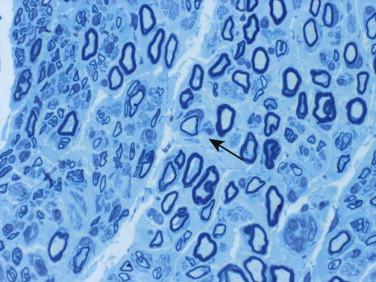
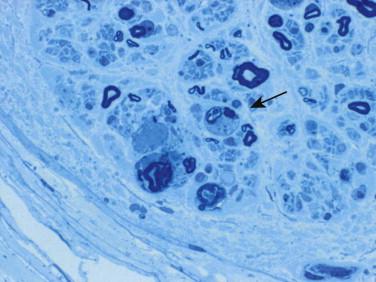
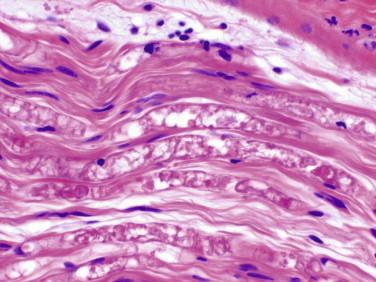
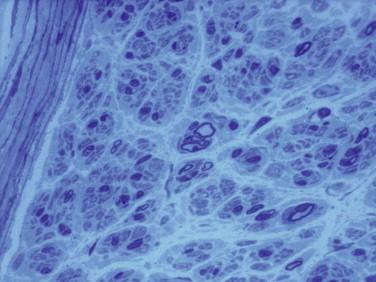
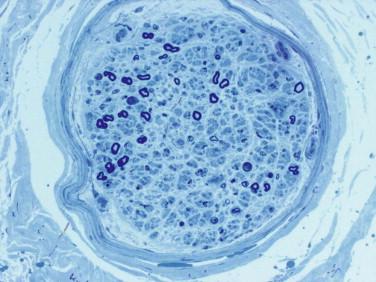
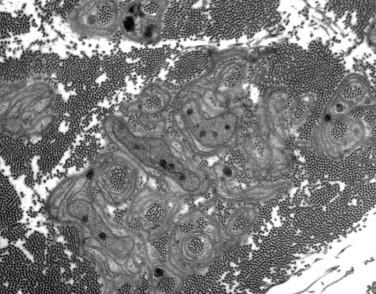
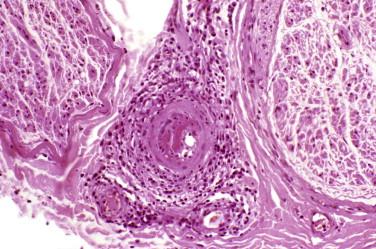
Become a Clinical Tree membership for Full access and enjoy Unlimited articles
If you are a member. Log in here